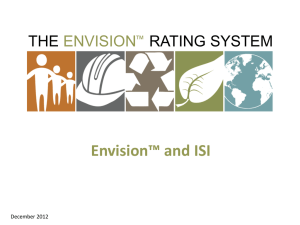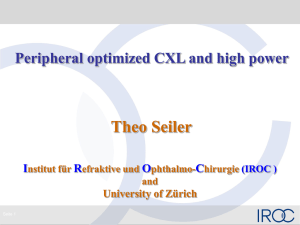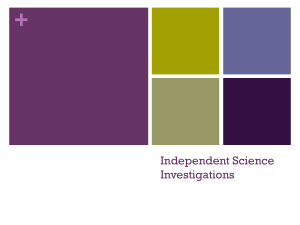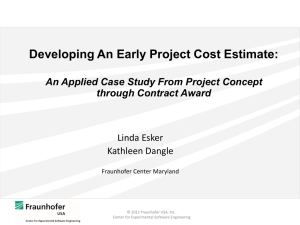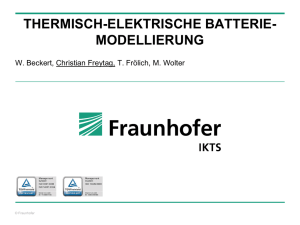Neurodata and surveillance
advertisement
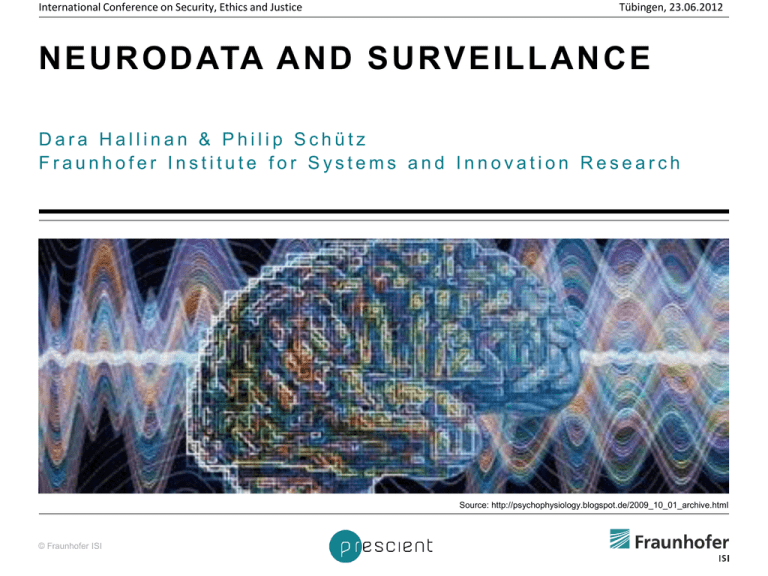
International Conference on Security, Ethics and Justice Tübingen, 23.06.2012 N EU R OD ATA A ND SU RVEILLA N CE Dara Hallinan & Philip Schütz Fraunhofer Institute for Systems and Innovation Research Source: http://psychophysiology.blogspot.de/2009_10_01_archive.html © Fraunhofer ISI Overview • What is neurodata? How is it collected? • Areas of applications, surveillance and security potentials • How neurodata engages Data Protection Unique characteristics of neurodata Significance of these differences © Fraunhofer ISI Seite 2 WHAT IS NEURODATA? © Fraunhofer ISI Seite 3 Functional magnetic resonance imaging (fMRI) • Measuring brain activity by depicting changes in blood flow • Pure imaging technology • Expansive, immobile and difficult-to-use • Medical and neuro-marketing application areas Source: http://www.readingresearch.kennedykrieger.org/fMRIs.html © Fraunhofer ISI Seite 4 Electroencephalography (EEG) • Detecting and recording specific brain activities by measuring electrical impulses • Imaging and steering technology • Low priced, mobile and easy-to-use • Applications: Mental type-writer, Brain2Robot, Games Source: http://www.experimentation-online.co.uk/article.php?id=1253 © Fraunhofer ISI Seite 5 Source: http://scientopia.org/blogs/scicurious/2010/06/16/what-does-that-mri-signal-mean-anyway/ © Fraunhofer ISI Seite 6 Source: http://www.dizziness-and-balance.com/disorders/central/epileptic.html The Value of Neurodata • Cognitive science provides ever deeper insight into brain as set of systems • Neurodata has value in all contexts of activity related to decision-making and actions of individuals • BUT: Exaggerated expectations • Technological determinism © Fraunhofer ISI Seite 7 Use Contexts • Initial use and development in medical contexts • Use contexts now expanding to Marketing Games Law enforcement Military/intelligence services © Fraunhofer ISI Seite 8 Neurodata in the security discourse • Authentication and Identification • Neuro-imaging in criminal proceedings as Neuro lie detector Proof for (in-)sanity (diminished vs. full responsibility) of the suspect • Revelation of secrets or prediction of behaviour (precrime) © Fraunhofer ISI Seite 9 Unique Qualities of Neurodat a • Neurodata and the brain as information • Alteration in the relationship between the individual and representative data • Level of insight into the individual, potential to predict • Neurodata enables novel aspects of the individual to be represented in informatic form © Fraunhofer ISI Seite 10 Neurodata in a Conventional Data System • Data protection framework and concepts shaped by context of relevance and directed development Focus on systems of processing rather than changes in characteristics of data – limited concept of data – neurodata has unique characteristics in data • • Definition of data key to substance to be controlled Forms keystone of framework Balance and mechanics dependant on applicability of definition Not certain whether application of framework to processing of neurodata will achieve aims of framework © Fraunhofer ISI Seite 11 Data Protection and Autonomy • Data Protection framework relies on undefined concept of autonomy • Neurodata offers different form of data-based interaction with individual Not based on traditional informatic representations of the individual but on the analysis of systems ‘behind’ the individual • Level of insight into, and power over, the individual may be unique protection rules may not achieve desired ends • Even if this shift were recognised, which principles could be applied? © Fraunhofer ISI Seite 12 Data Protection in a Community of Rights • Data Protection transfers particular set of principles onto data sphere and processing actions – which principles is based on conception of nature of data • Neurodata focuses on the brain – a conceptually different space, with different applicable principles • Could the same framework be extended to broader relevance data protection has developed substance and meaning in relation to development context © Fraunhofer ISI Seite 13 on which principles would one base an extension? Conclusion • Neurodata-based technologies expanding in use contexts and sophistication • Neurodata has significant value • Neurodata has unique characteristics and link with the individual • The application of the current framework may not achieve desired ends The novel features of the data may not fit the conception in the framework © Fraunhofer ISI Seite 14 The brain as a source of data poses unique issues
